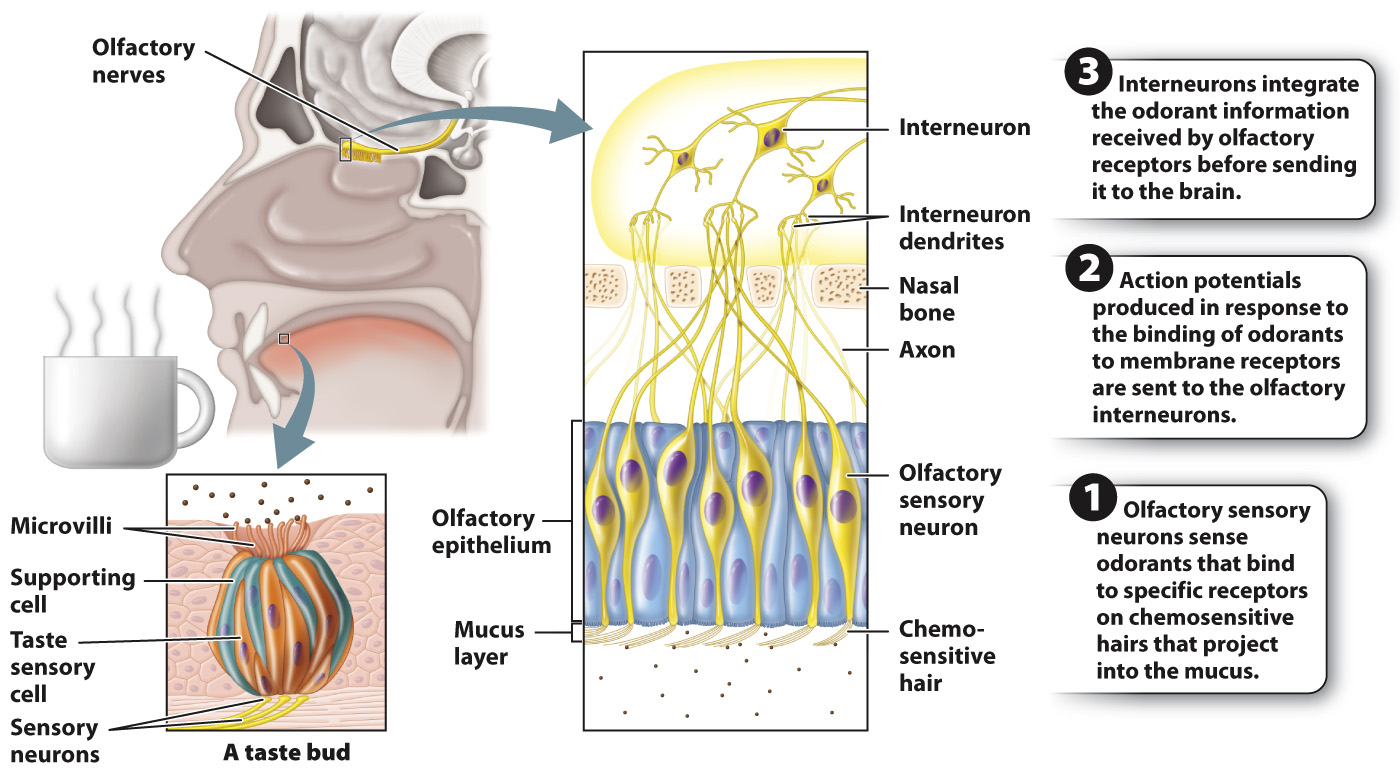Smell and taste depend on chemoreception of molecules carried in the environment and in food.
The sense of smell in mammals depends on specialized sensory neurons that line the nasal cavity (Fig. 36.5). These neurons have long, hairlike extensions containing membrane receptors that project into the nasal mucus. Odor molecules are captured by the mucus during inhalation and bind to membrane receptors. Each sensory receptor has one type of membrane receptor, but there are typically many distinct sensory receptors, each detecting a different molecule. Humans have nearly 1000 genes (about 5% of our genome) that express particular odorant receptor proteins. Mice have about 1500 genes that express odorant receptor proteins (about 7% of their genome). The olfactory system can detect specific odor molecules in quite low concentrations.

When bound to odor molecules, the sensory receptors produce excitatory postsynaptic potentials (EPSPs). If enough odor molecules bind to the receptor cell, the EPSPs are summed and transmit an action potential to an olfactory bulb interneuron that receives information only from sensory receptors sensitive to a particular odor molecule. The interneurons in the olfactory bulb, in turn, transmit the combined information from different chemoreceptors to the brain. These neurons communicate directly with the brain by the olfactory nerve, one of the cranial nerves (Chapter 35).
Taste is achieved by clusters of chemosensory receptor cells located in specialized taste buds, the sensory organs for taste (Fig. 36.5). Some fish have taste buds in their skin that sense amino acids in the water, helping them to locate food. The taste buds of terrestrial vertebrates are in the mouth; most of the taste buds in mammals are on the tongue. In humans, the tongue has about 10,000 taste buds, which are contained within raised structures called papillae, giving the tongue its rough surface. Each taste bud has a pore through which extend fingerlike projections called microvilli that contact food items. The microvilli provide a large surface area that is rich in membrane receptors. These receptors bind to specific chemical compounds that give the food its taste. Taste bud sensory cells synapse with afferent neurons, which fire action potentials when a sufficient number of sensory cells are depolarized by a particular food item. Compared with olfaction, taste generally requires higher concentrations of food chemicals coming into contact with taste bud receptors to stimulate receptor depolarization.
Human taste can be divided into five categories—
Quick Check 2 Why is your sense of smell and taste diminished when you have a cold?
Quick Check 2 Answer
Excess mucus secretion blocks airborne odor molecules from reaching the chemosensory hairs of olfactory neurons, reducing their ability to bind odorants and therefore reducing the sense of smell. Taste is also affected because much of the sense of taste depends on smell.